From John Hennessy:
Last weekend I had the great pleasure to be invited to explore some great sites along the Rapidan in both Culpeper and Orange Counties. Brett Johnson, who lives near Rapidan, and Walker Somerville, scion of the family that has owned land at Somerville Ford for three centuries, were the hosts. My thanks to them for a memorable day–they know the ground as only locals can, and many of the specifics included here were conveyed by them.
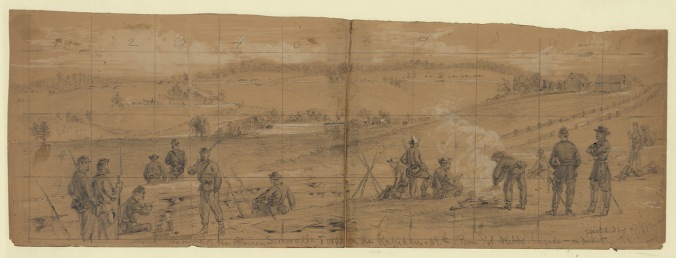
Union pickets at Somerville Ford on September 14, 1863. Note the Confederate lunettes on the distant heights. The two barns on the right of this image also appear in the sketch shared below.
The purpose of this post is simply to provide a visual record of what we saw, without too much elaboration. If you have questions, feel free to ask in the comments. If I don’t know the answer, I’ll find someone who does.
Bear in mind that every site mentioned in this post is private property and generally not accessible to the public.
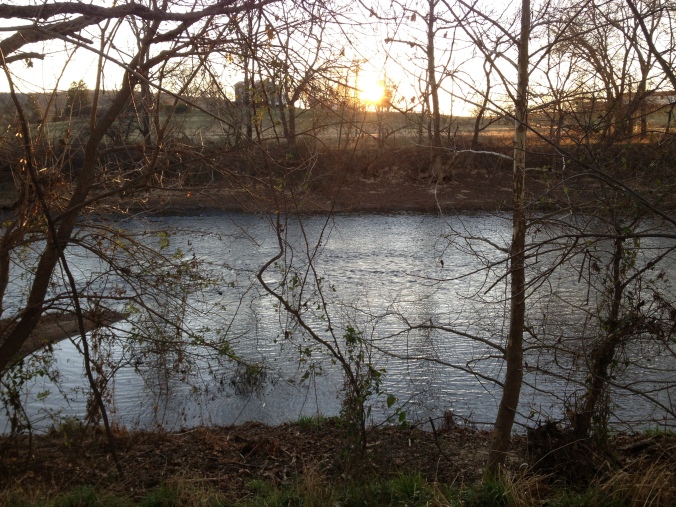 We started at Somerville Ford on the Rapidan River. Here, on August 20, 1862, the entirety of Jackson’s wing of Lee’s Army crossed to commence the Second Manassas campaign. Samuel Buck of the 13th VA crossed here that day:
We started at Somerville Ford on the Rapidan River. Here, on August 20, 1862, the entirety of Jackson’s wing of Lee’s Army crossed to commence the Second Manassas campaign. Samuel Buck of the 13th VA crossed here that day:
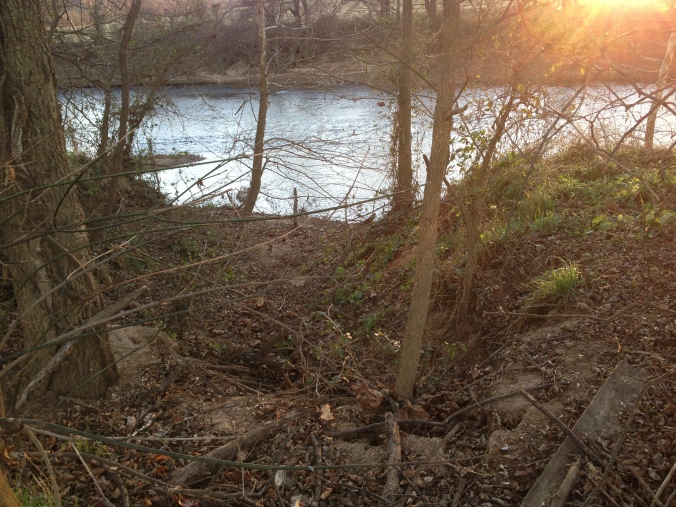
This washed-out cut is on the site of Somerville Ford on the Orange side, and may well be the remnant of the road to the ford used by Jackson’s men.
The water was pretty deep but very pleasant to our warm bodies. As soon as we could get our trousers off we waded in, yelling like a lot of school boys. It is an interesting sight to see so many men crossing a river and most amusing to hear their witty remarks. Men under such circumstances are only grown children.
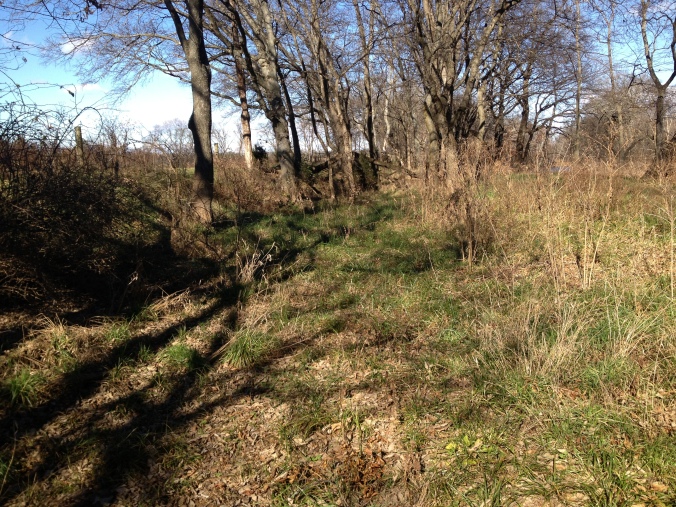
The old road leading up from the ford on the Culpeper side. The left bank of the road cut is clearly visible.
On September 14, 1863, Union and Confederate artillery engaged in fairly robust counter-battery fire here. Charles Furlow of the 4th Georgia (his diary is at Yale University) left a fair description. [More images beyond the jump.]
When we arrived within half a mile of the river our Brigade was halted and ordered to stack arms and clear the road so that the Artillery could pass, then rode down to the river to see what was going on. In front of us I could see nothing but a few Cavalry skirmishers who were firing new and then at our pickets. A mile or two below, at Raccoon Ford, Genl Stewart was fighting them and using some Artillery. About 2 o’clock our Division Battalion of artillery came up and passed to the front. As soon as the enemy saw it they ran out some peices [sic] and soon a brisk duel was going on which lasted some time. Our Artillery lost six killed and eighteen wounded.
Here is another view of Union troops at Somerville Ford, in an unfinished bucolic sketch by Waud. Again, note the barns, which are also shown in the sketch above.
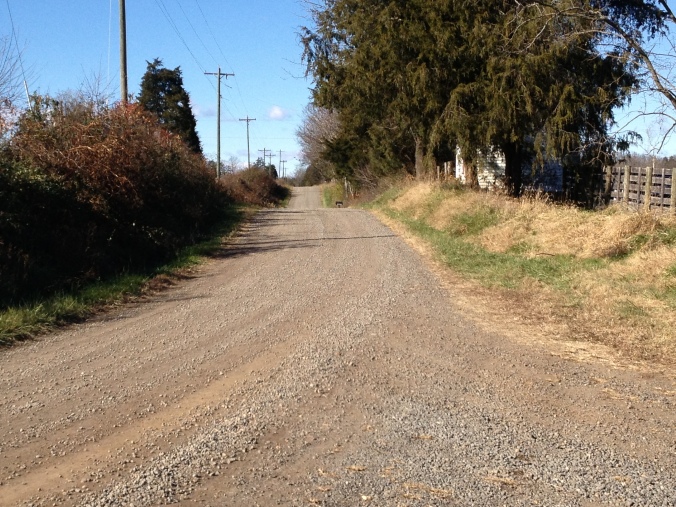
The road from Somerville Ford, Culpeper side. Jackson passed here on August 20, heading away from the camera.
Here is a manuscript map from an intelligence report delivered to Union colonel George Sharpe in September 1863, showing the position of Confederate batteries at Somerville (the original is in RG 393 at NARA and was found by Greg Mertz in 1985). The right-most Confederate works shown on the map can still be seen in a pasture alongside Route 522.
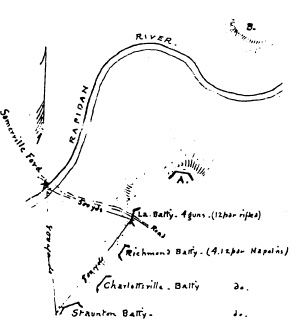 In the weeks following, the armies glared at each other up and down the Rapidan. Furlow recorded a bit of humorous competition between Union and Confederate pickets at Somerville Ford.
In the weeks following, the armies glared at each other up and down the Rapidan. Furlow recorded a bit of humorous competition between Union and Confederate pickets at Somerville Ford.
Sept 15. Remained at the camp of the day before. Considerable fun going on, on the picket line over a turkey. The yankees shot a turkey and attempted to get it, but our sharpshooters drove them off. Our men attempted to get it then but were driven off in turn by the yankees. Thus it went on for half the day, but the yankees, I think finally got it. This made our men mad so they went over and captured the yankee skirmishers to pay for it.
Today the ford site is largely intact, about a mile upstream from where Route 522 crosses the Rapidan. An impressive wartime road trace leads up from the ford on the Culpeper side, eventually merging into a modern farm lane that crosses “Somvervillia,” the historic Somerville farm (the wartime big house burned during the war and the present house was finished in 1870). On the Orange side, Route 636 breaks off 622 and leads directly to the ford. A highway bridge crossed the river here until the floods of 1942, and the abutments from the bridge still stand. The ford was about 200 yards downstream from the bridge. A washed-out gully may be the remnants of the wartime road leading directly into the river.
The site of the bridge has become something of an ugly dumping ground. On the Orange side of the river, you can get fairly close to the site of the ford while still on the old VDOT right of way. The ford is completely inaccessible to the public on the Culpeper side.
Our journeys this day took us also to Morton’s Ford and several sites in between. We’ll offer up some photos of those in coming posts. Some curious stuff.
For the moment, though, here’s an image of Raccoon Ford, where Longstreet’s wing of Lee’s army crossed on August 20, 1862. Theodore Fogle of the 2d Georgia, whose excellent letters are at Emory University, left this raucous description of the crossing here.
An army fording a river is a sight worth seeing. Some of the men just walked in with shoes & all on, but most of them were guiltless of any clothing below the waist. I was “sanscoullotte,” sans everything except my jacket, my shirt was tucked up under it and the jacket buttoned up to my throat, in I went, wouldn’t you have been amused to see me. We all crossed safely, one fellow fell down & then current carried away everything but his shirt. Wasn’t he in a nice predicament.
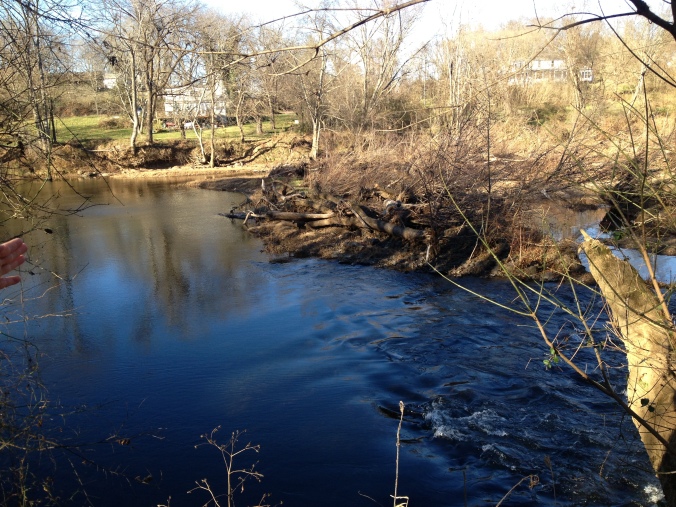
Raccoon Ford, from the Orange County side of the Rapidan. Longstreet and about 25,000 men crossed here on August 20, 1862. The road ran along what is today the upper edge of the island.
Raccoon Ford is easily seen from the Orange side of the Rapidan, along Raccoon Ford Road, Route 611. The north bank is privately owned.
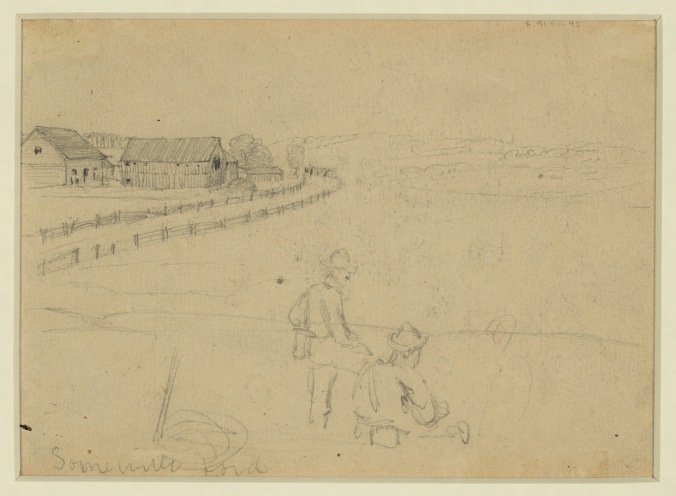
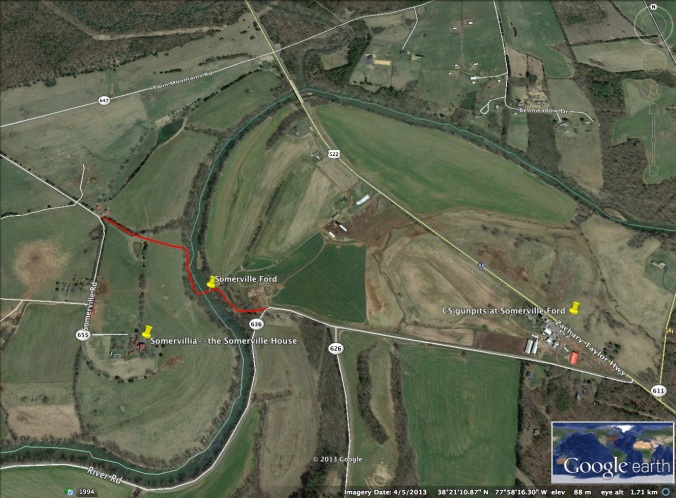

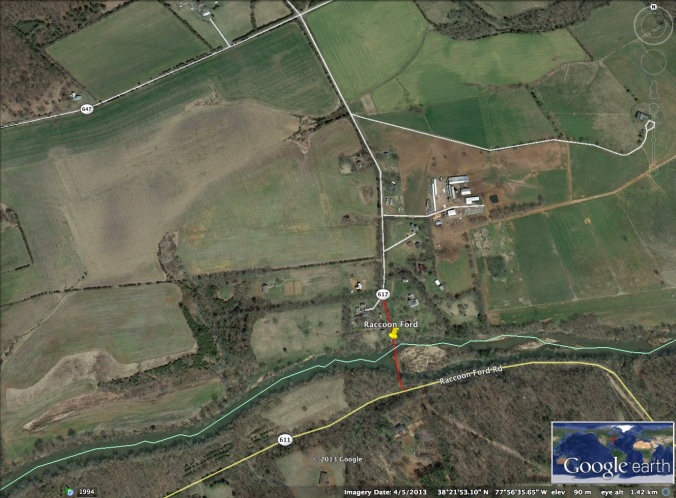
Thank you for the entertaining and informative read – it is good to see, in their own words, that the young men who suffered so much in this war had such wonderful moments of lightness. Their words are a treasure, especially when so keen a sense of humor peppers their accounts.
Great information! Very fun to read!
Battery H 1st Ohio was on picket duty at Somerville Ford.
Sept 22, 1863 “Up this morning at 3:30 and as soon as we could hitch up we started for our picket posts, got there just at daybreak and got our guns in position. Then I took one of our drivers and went down near the river and got some hay for our horses. Found a splendid house there owned by a secesh Doctor by the name of Walter Summerville. We went all through the house and found large piles of medical books and some human skeletons. It is one of the nicest houses that I have seen in this part of Virginia. The old Dr. is over in the rebel lines on his other plantation of 200 acres of land.”
Great account and thanks for sharing. Can you let us know the source?
I wonder what happened to Summerville’s “skeletons”?
The Battery H account was written by John Merrell in his diary(UCLA Library). John was in the Somerville house at various times during this time period. The soldiers could see the rebel batteries across the river. At times there was sniper fire, but mostly it was quiet which allowed for trading across the river – newspapers, tobacco etc. There also exists one or two letters from William Styer (Marietta Public Library, Ohio) of the battery which also details their stay in this area at that time.
Merrell also talked with a free black slave. I wonder if that was his house that appears in this post? “I had a talk with a free darky that is in the Dr’s employ. He reports a large body of rebels leaving Lee’s army that left some two weeks ago for Richmond [?] with the expectations of going to reinforce Bragg and Beauregard.”
From my G-G-Great Grandfather’s Civil War diary; entry dated August 20, 1862; “Reveille was sounded at one o’clock, roll called and horses fed and harnessed, and as the East reflected the advances of coming day, we started taking the road to Somerville Ford, across the Rapidan River. We crossed the river, after a toilsome march over some very high hills, about eight o’clock and took the road to Stevensburg to Culpeper. We reached this antiquated looking pace in the middle of the day and were greeted by the females with every demonstration of joy, chatting with the soldiers in perfect freedom…”
I seriously hope that this spring (before the skeeters come out), I can hook up with the property owners and have a look at this location up close and personal. I am writing the biography of the man who wrote that entry; William Ellis Jones, Crenshaw’s Battery, Pegram’s Artillery, and I plan on visiting every major location upon the march he documented in his diary.
Any suggestions on how I can get access/tour?
Grace,
contact me for access to the Raccoon Ford site.
JRS
Hi James, Wow – Thanks! I am actually going to be at Spottsylvania/Fredericksburg area this weekend. Had planned to do some side trips. How’s Monday or Tuesday work for you? jones[dot]c[dot]hall[at]gmail[dot]com. Drop me a note at your convenience!
Ever since i moves to Va i have become very very interested in the history of civil war. I now reside on 522 near 611 as my landlord owns the grounds of somerville ford orange side. Ive gain access to the ford and took my children to that same crossing as i watched them play in the water while telling them the stories that i learned about. Also took them to see the slave house on culpeper side. The history fascinates me and would love to see and explore the racoon ford as well. If theres any chance that this is possible i would greatly appreciate the outting. I know this post is 3 yrs old, just thought i’ld give it a try. Thank you for your time.
I was wondering if you could tell us more about the map that was posted. What is Position “A”? What did the report that accompanied the map have to say? Curiously three soldiers from Battery H had transferred to the BMI and were working for Sharpe. Wonder if they had a hand in this report.
Edward:
I attach here a pdf of the entire report, as transcribed by Greg Mertz many years ago. As you will see, Sharpe credits much of his information to Confederate deserters. Apologies for the poor quality of the photocopy.
Thanks for posting.
Can you repost the Mertz report? or did I just miss it somewhere on here? thanks in advance.
Besides Position “A”, what I really meant to ask was “What is position B?”
There is very visible Ford approximately 3/4 mile upstream from Raccoon Ford, the village. It branches off to the left of the stringfellow cemetery. Just to to East of Retreat..
I’m trying to determine if this is the site of a Revolutionary War Grave – ROSSON, Reuben. The VA Sons of the American Revolution mention a farm “behind Culpeper and Racoon Ford” as the burial location. Still trying to find more details.
Any mention by the owner about this?
In the aerial/satellite photo of Raccoon Ford adjacent to the Route 647 symbol in the upper left hand corner of the photo stands St. Paul’s Episcopal Church. Built in 1850 and occupied numerous times by both Union and Confederate forces during the war. It last served as winter quarters for Custer’s Union Michigan Calvary during the Winter of 1863-64. Custer’s troopers badly damaged the church by knocking a hole in the back wall so they could bring their horses in with them at night, This was done out of concern that the Ewells soldiers just 700 yards away, would sneak across the Rapidan River and steal them. The church was also referred to as the “Lime Church” by locals, as it was constructed of a wood frame and filled with concrete which was a highly unusual method of erecting a building for the time period. The Union solders burned the church pews for firewood to keep warm, and the church records were lost probably used as either toilet paper or for fire starting material. When the union cavalry departed that following spring, they added further insult by busting out all the windows and tore the doors off their frames etc. Out of 2 dozen churches in Culpeper County at the outbreak of the war, St. Paul’s is one of only four to survive due primarily to the concrete used in it’s construction. A preservation effort is now underway to save it from further vandalism and return it to it’s rightful place in Civil War history.
St Paul’s Episcopal Raccoon Ford served as the Field Ed placement site for the (future) Bishop John Shelby Spong. He would drive from Alexandria at 5AM to be there.
Would love to know more about the preservation project.
Greetings Charles!
I know that Bishop Spong was rector of St. Paul’s Episcopal of Richmond Virginia from 1969 to 1976, which is a very large and famous church where Jeff Davis and Robert E. Lee both worshiped during the Civil War, but I was unaware that Bishop Spong performed his Seminary Field Education at the Raccoon Ford church of the same name. Could we have the two St. Paul’s Episcopal churches of the same name confused? Please shoot me an email as I would like to discuss further with you and I’ll fill you in on the preservation project. uflyacro@aol.com
Hello, I am a native Virginian and descendent of James Somerville. My great grandfather, George Smith Somerville (1858-1909), was the Rector of Old Falls Church for 9 yrs and is buried there. His 6 siblings and father died during the diphtheria outbreak of 1858/59 and are buried in the Somervilla Cemetery. I would very much like any info on my family and to tour the Somerville Ford and cemetery if someone would oblige me. Thank you, Anne Somerville Hilton
Anne, according to Virginia law, if you are a descendant of those buried in the cemetery then you have rights to visit it. The Somerville’ still own a majority of that property. Of course, introduce yourself first. -Brad
Hello, I just stumbled on your blog and I’m quite happy I did.
I’ve been researching my family for years and just found out they they owned land at Morton’s Ford in the book 1815 Directory of Virginia Landowners Culpeper Co. It was sold after the death of my 5th great grandmother (Elizabeth Quisenberry Asher), and her children all moved west except for one that stayed in Culpeper. I’m descended of a son that migrated to Ohio than to Indiana.
Did your travels ever take you to Morton’s Ford? Do you know if there is a family cemetery there?
Thank you
-Alexis Asher
Alexis, I have indeed been to Morton’s Ford, and the area is largely unchanged since the war. The cemetery there is associated with the Morton house and family, which stood just over a half-mile south of the ford itself. There may be others in the neighborhood. If you send me an email at john_hennessy@nps.gov, I can put you in touch with the person who knows the Morton’s Ford area better than anyone, and far better than I do.
The earliest known owner of the soldiers rest, to my knowledge, is Captain Charles Bruce followed by his son-in-law Captain James Williams. They are currently buried in the family cemetery along with later owner Dr George Morton. As well as a NC confederate soldier and unknown federal soldiers. I have seen this with my own eyes.
CPT. James Williams’s daughter, Elizabeth, married George Morton. After Williams’s death Elizabeth’s interest in the soldiers rest property was 307 acres. Dr Morton purchased 137 acres more from the Williams family.
It’s a beautiful place and worth the visit. It occasionally goes on the market for 11.7 mil and is darn near 2000+ acres. Larger today than it was when Dr Morton owned 635 acres. Of which 444 acres had been that of the Williams family.
B. Craddock
Hi, Interesting reading. Recently discovered father’s family connections to that area. Daniel Brown family,Robert Smith family, William Watts family, Frederick Cabler family. All from Potato Run to the Rapidan River. No sign of any now ?
Ok, found the deed to the Morton for 128 acres on the Rapidan River in 1858. It was Brown’s ford before the sale. The lot was from 1767 patent.
This was a very informative read that has really peaked my interest. I have recently become interested in the Civil War. It is my understanding that my 4x great grandfather, Ira Cecil Harding of the Michigan 6th Cavalry, was killed while on picket duty at Raccoon Ford on 9/16/1863. His son, Hartford Harding (my 3x great grand uncle), was also serving in the MI 6th Cavalry; he wrote his mother Ancy (Hale) Harding,
“Dear kind mother, I take pen in hand to let you know that I am alive but alone. I lost my best friend that I had in the army. He got killed. The 16th, he was on picket at the Coon ford. The Rebs flanked our men and 2 men out of our company was killed. Father was one of them and a man by the name of Chandler. I want you to tell Will for me, for mercy sake, don’t let his mother and little sister want for anything that he can do and he will never lose any thing (can’t make out word) it. I am here and can’t get away and he must take hold and do as well as he can. Father got the letter that had the babes are in no (can’t make out this last sentence).”
The ‘Chandler’ mentioned in Hartford Harding’s letter was Private George B. Chandler (originally of Locke, MI) also of the MI 6th Cavalry.
I hope that if I am ever able to visit the area I will be able to speak to the property owners about seeing this area as you did.
Thank you for posting this information.